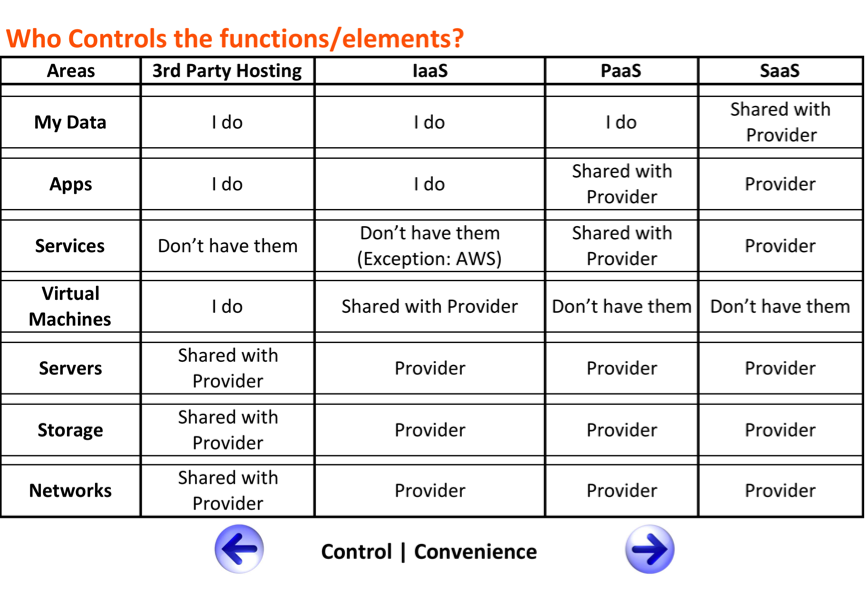Solutions are becoming more streamlined, but where is it all going?
Last Saturday saw me at a Microsoft Azure “boot
camp” where I chatted with some very talented industry professionals and
listened to their opinions on the “new” Microsoft Azure! It was worth my while
rising early on Saturday to go there and hear some of Microsoft’s senior
Engineering talent talk about the new Azure and how it will make development
life easy from Websites to MVC web Apps to Cloud Services. Impressed by their
presentations, it got me thinking about where Cloud is going and how
Microsoft’s latest offering in high level terms is similar enough to that of
AWS in particular given its notable improvements in virtualisation functionality
and an impressive ease of development which AWS should take note of in my view.
Whilst Microsoft, AWS and all cloud
computing competitors have put allot of thought into their offerings,
differentiation can be difficult thus deciding what is good for you and/or your
business can be a hard task for even the informed developer and/or business
owner. There is no doubt that the major
players have a good support structure in place to help businesses decide but
ultimately, it comes down to the cost benefit of the value proposition when
placed against a company’s need for consistency, availability and partitioning
of transactions in their data management plans. Knowing what you want in detail
before looking for value in a Cloud partner is key to getting what you need to
be successful in your use of cloud computing! In short, know your data management
requirements inside out and then go look for a cloud provider!
My mind then moved onwards thinking about the
future and how these marked improvements will feature in marketplace and
competitor reaction as the competition cycle keeps on turning. A couple of
things came to mind, which I would like to share with you as possible “watch
that space” points for the short to medium term future:
Data
convenience: As in life, there is a continuing shift
in business towards convenience. A
hallmark of cloud systems in PaaS and SaaS in particular is that it’s
controlled more by the provider then you as the customer. As convenience is the
keyword, you don’t have to do your own updates, manage your security, etc. IaaS
is a little different in that your use of virtual machines requires more
maintenance from your IT guys but offers great flexibility at the cost of a
little convenience. The details make it a powerful product type, in which AWS
and Microsoft are key players.
Trust: Given the high performance rates and availability track records of
the major providers to-date, trust is building in cloud computing that is
leading to more and more “trusted” use by consumers and business alike. These
increasing usage levels has higher business and operational risk weightings, which
has being retained or off the table for any cloud solution in the past. Trust
earned is making convenience a unique selling point for cloud solutions!
Databases:
The industry’s wary welcome of NoSQL in particular
is starting to mature into an embrace that sees database and network storage
solutions develop at a faster and faster pace. The big sell for SQL and
relationship databases (RDBMS) has always being its “relational” features in
SQL that allows analysis and joins with data in schema tables to happen
gleaning insights for the business who uses RDBMS’s wisely. This has
being the way for many decades since Oracle V2 with NoSQL now getting the
positive attention it deserves. Its development into cloud has given it a good
grounding for large network benefits that are getting better and better by the
day, from large parallel computing jobs where huge amounts of data are processed
in a short period of time to the narrowing of the bridge between SQL (i.e.
Relational) and NoSQL (i.e. Non-Relational). The latter is the more recent
development with great improvements reaching market like Drill and Data Lake,
which are effectively narrowing the relational and non-relational divide making
modelling, management and SQL “like” querying more integrated, useful and
flexible to user needs. This handing of power into the hands of the user is why
I think database and storage solution technology will eventually migrate into a
single interface and storage management system? Who gets there first with a
fully functional “one stop shop” for your truly centralised storage solution
needs from one user interface? Well that’s anybody’s guess!!
Security:
Security is always an issue when you are ‘trusting’
your cloud provider to take care of your data. The ability to get hacked is
always present but so is the growing and evolving expertise of the cloud
providers who have shown a capability that is certainly making “hacking” a more
difficult and faster changing occupation. It’s a never-ending battle between
hacker and provider, which indicates to me that the ability to maintain data
integrity from hacking will be a keynote element in the progression of cloud
technology. Consider this, if a cloud technology titan like AWS could be hacked
and brought to its knees, the consequences in business terms would be
catastrophic for whole industries, never mind whole companies!
The responsibility that cloud providers
take on in the war against hacking is a grave one and to date, their success
lies in the preservation of their network’s integrity, which has opened an
impacting gateway for society’s data management needs! Least they fail; we all
fail… best they succeed and we all succeed in maintaining a key part of our
infrastructure in society’s continuing journey!
So if increasing trust is matched with more
developed risk management approaches in using a fast developing platform for
our data needs, I submit that our flexibility as a society can rest upon such
an axiom and enable great things in the years to come!
Do leave your opinion on cloud technology
in the comments section… I would love to get your take on the newest arrival to
our digital world!
Sources/Credits:
Pics;
Credits;
Microsoft for its presentation of Microsoft
Azure during the “Azure Boot Camp!”



























